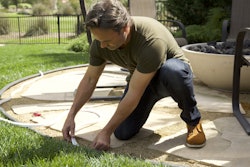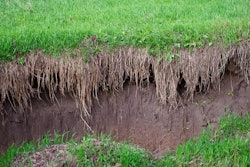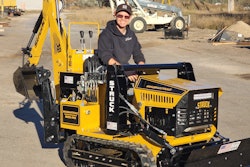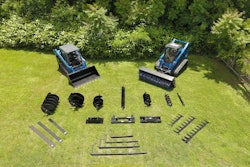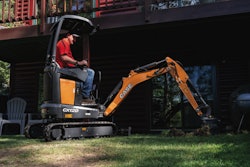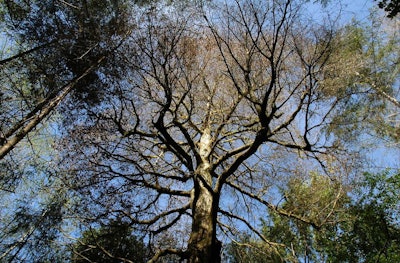 A tanoak tree killed by sudden oak death in Oregon.
A tanoak tree killed by sudden oak death in Oregon.Photo: USDA Forest Service, Region 6, State and Private Forestry, Forest Health Protection/Flickr
It’s ironic that for a tree disease known as sudden oak death (SOD), it isn’t particularly sudden, and it doesn’t just affect oak trees.
Since this name is rather misleading, some have started calling SOD ramorum blight, ramorum dieback or Phytophthora canker disease, but whatever you call it, the disease is still devastating and there is no cure currently.
It is estimated to have killed more than 1 million oak and tanoak trees over the span of a decade, according to the University of California Integrated Pest Management Program (UC IPM).
Where does it come from?
SOD is caused by a fungus-like plant pathogen called Phytophthora ramorum. It was first reported in the U.S. in 1995 in the San Francisco Bay area. The origin of P. ramorum is unknown.
It thrives in wet, cool climates, so it has primarily been a problem in northern coastal California, Oregon and Washington, but nurseries that mimic this microclimate can also foster P. ramorum in other areas. It wasn’t until 2004 that the nursery industry was impacted by the pathogen, according to the California Oak Mortality Task Force.
More than 100 other plant species are susceptible to the disease, typically only suffering from leaf spots and twig dieback. These plants serve as hosts and are one of the main ways this disease travels considerable distances. Rhododendrons and camellias are some of the main hosts for P. ramorum. For a full list of the known hosts as of 2013, click here. Additional hosts added since 2013 are listed here.
These hosts serve as breeding grounds for P. ramorum and are spread by the wind, rain or contaminated soil or plant material. It can survive in infested plant material or litter, so it is crucial to properly destroy infected plants.
What are the symptoms?
While host plants suffer from foliar blights, the trees that are infected form trunk cankers. As the name would suggest, sudden oak death affects the majority of oak species. The oaks from the white group, such as valley oak and blue oak, are believed to not be susceptible at this time, according to UC IPM.
Tanoak is the most susceptible tree species for SOD. P. ramorum can also infect Douglas-fir, grand fir and coastal redwood.
The challenging thing about SOD is there are a number of diseases that have similar symptoms.
Some of the lookalike diseases include: wetwood, California oakworm and Annulohypoxylon thouarsianum. Wetwood causes bleeding on the trunk like SOD but its bleeding is watery, copious and smelly, while P. ramorum is sticky and spotty, according to the California Oak Mortality Task Force.
California oakworm can cause heavy defoliation, giving a tree the look that it is dead or dying, yet the tree will releaf in the spring. Meanwhile, Annulohypoxylon thouarsianum can appear in the later stages of SOD, and this dark brown/black fungus can appear on the trunks of trees that are dead or dying for many reasons.
The symptoms of infected oaks include cankers that are red-brown to black and bleed a dark black or amber sap. The entire crown’s leaves can brown rapidly in the span of two to four weeks, but death can take more than two years.
Occasional oozing can be hard to spot but infected trees tend to attract insects like ambrosia beetles and bark beetles. These attacks can weaken the tree further and speed up its death.
For tanoak trees, sometimes they can be infected without showing cankers or bleeding, making it hard to diagnosis. When it does show symptoms, its crown will also brown and has similar cankers to oaks.
The only definitive way to make sure you’re dealing with P. ramorum is to submit sample of the plant material. Foliar sampling requires collecting 10 symptomatic leaves from a host. It is advised to contact the local cooperative extension to see how sampling is being conducted in your area.
As for bark sampling, UC IPM says you must request sampling material in advance from the laboratory in order to collect samples properly.
What can I do?
Once you get your results back and find it is SOD that is affecting the tree, you must decide whether the tree should be removed.
The chances of mortality from SOD varies based on a number of factors. Some trees can be infected and survive for a considerable amount of time while others die quickly. The severity of the cankers can indicate how likely it is the tree will die. If they completely encircle the lower portion of the tree there is a good chance the tree is dead, even if the foliage remains green for a period of time afterwards.
UC IPM says that the presence of the disease alone is not justification for removing the tree as infected oak trees have little to no impact on the spread of P. ramorum. The important thing to consider is the hazard it presents to people and property. If it is a threat, it should be felled without delay.
When removing infected trees, cut stumps close to the ground but avoid stump grinding, as this can cause the equipment to become contaminated and spread the pathogen on other jobsites. The ideal time for removal of diseased trees is June to October. Avoid removing them November through May when moist conditions favor the odds of the disease spreading.
Infested material should be destroyed on site in generally infested areas. Removing it from the site is only advices if it is the first infected tree detected.
Are there ways to prevent it?
There may be no cure for SOD at this time, but there are preventative measures you can take to reduce the chances of the disease spreading.
While there are quarantines in place to prevent the movement of infected material, still take it upon yourself to carefully inspect the known host plants such as rhododendrons for P. ramorum symptoms.
When working in P. ramorum-infested sites, take the time to sanitize personal gear and equipment before leaving that area so as not to spread it.
The phosphonate compound Agri-Fos has been listed as a preventative treatment for oak and tanoak trees as it can protect high-risk trees from infection and suppress the disease if applied in the early stages of infection.
Trees should be treated if they are within 150 feet of infected plants. Booster treatments are needed every one to two years.



